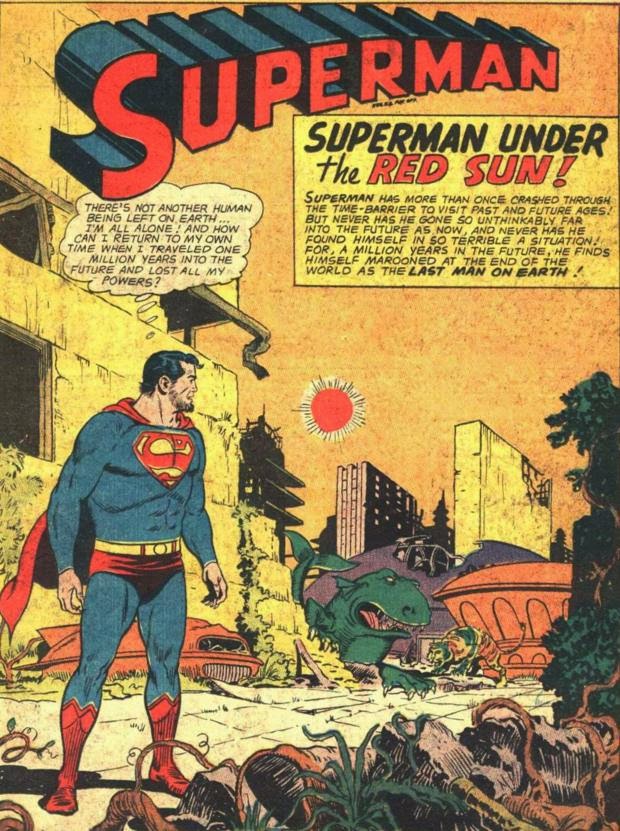In TRANSCENDENCE WHAT AIN'T SUBLIME, I printed a few excerpts from the 1951 Harvey Kurtzman story, "Man and Superman." I did not, in that essay, address any questions of "stereotype vs. archetype," as my focus was on contrasting the two principal forms of transcendence as outlined by Aldous Huxley, "vertical" and "horizontal" transcendence.
However, "Man and Superman" works equally well to describe a battle between, not archetypes, but stereotypes about popular tropes.
Despite the use of the name "Superman" in Kurtzman's oh-so-Shavian title, the only trait of the DC hero being guyed here is the character's ability to defy scientific law by acquiring an unscientific level of physical density-- physical, that is, as opposed to the even greater mental denseness of the comic foil Charlemagne. But though Kurtzman deserves credit for a clever satire, it is a satire that, as I pointed out earlier, depends purely upon a "reasonable and agreeable" conception of scientific law. There is no symbolic complexity to be found in Kurtzman's conception of scientific law: it's simply an amorphous taskmaster, set to punish those who try to step outside its unforgiving bounds-- which is indeed the fate of Charlemagne, who is stomped into nothingness by Imperial Entropy.
As noted before, Superman as Superman is not being spoofed here: Kurtzman mocks only one aspect of the character, his flagrant disregard for scientific law. And though a myth-critic like myself can find symbolic complexity in many aspects of Superman's mythos, I have no problem admitting that the character is stereotypic in this respect. That he gets his science-defying powers from a yellow sun, or loses them in the presence of a red sun, are stereotypical devices to quickly explain why the hero does or does not have powers.
In neither case does one stereotype "defeat" the other, though. Readers of Superman often know that his powers make no sense in terms of real-world science, and so Kurtzman's satire cannot have any effect upon these readers' willingness to ignore verisimilitude for the sake of a pleasing fantasy.
It is possible for one stereotype to displace another, however. In Will Eisner's celebrated comic feature THE SPIRIT, the artist resorted in large part to "minstrel-show" stereotyping in producing the character of Ebony. None of the characteristics of Ebony-- his mush-mouthed speech, his blubber-lips or his deference to his white boss-- are acceptable stereotypes in modern culture.
However, was the Ebony stereotype displaced by anything comparable to an archetype? I would say that, while such a displacement was conceivable, what displaced the old stereotype was a new one. Eisner, in this defense of Ebony, implies that the stereotype of the "Malcolm X-style radical" has usurped, or wishes to usurp, Ebony's place in the cultural scheme of things.
Eisner can be fairly criticized for distorting his past representations of Ebony. However, he seems to have been at least near the mark, as the stereotype of the "angry black man" is entirely acceptable to modern readers, however banal its representations may be. I think this is the sort of usurpation my nephew was thinking about, where a "good stereotype" displaces a "bad stereotype"-- and archetypes as such are not really involved at all.
Next: Archetypes vs. Archetypes.





No comments:
Post a Comment